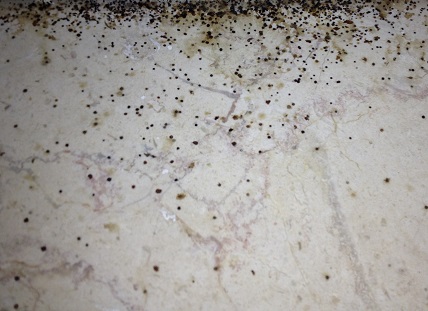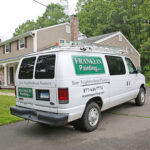Got Mildew? What to Do Before Repainting
 Moisture can have a damaging effect on homes for a variety of reasons, and mildew is among the problems caused by excess moisture. Many homeowners make the mistake of painting over mildew.
Moisture can have a damaging effect on homes for a variety of reasons, and mildew is among the problems caused by excess moisture. Many homeowners make the mistake of painting over mildew.
Taking steps to eliminate mildew growth and control moisture before painting are two measures which can save you money by preventing further damage to your home and furnishings.
It’s best to get rid of mildew before painting for potential health reasons, as well. According to the U.S. Centers for Disease Control and Prevention (CDC), mildew is a serious health hazard that can cause respiratory problems, particularly for people with asthma. Individuals with compromised immune systems can be susceptible to respiratory and lung infections as a result of exposure to mildew. There are numerous other health risks associated with prolonged exposure to this fungus, such as skin rashes, sensitivity to light, and fatigue.
Mildew can sometimes look a lot like dirt. Sometimes it is brown, black, or green in appearance; it can also appear powdery, slimy, or fuzzy. Mildew is a fungus which eats through porous painted walls and other surfaces. The paint is destroyed as mildew eats its way through the paint; masonry can also crumble, and wood can rot from mildew.
If you are unsure whether there is mildew in your home, there is a simple test that you can use. Simply drip a small amount of everyday household bleach on the questionable area. The stain will be removed within a couple of minutes, if it is mildew. If it is dirt, the bleach will have no effect.
The reason people sometimes apply paint on top of mildew is because they are either unaware of the inadvisability of it or they are simply seeking a quick fix. Mildew will bleed through the paint eventually. Although some paints contain mildew inhibitors, these products merely inhibit new mildew from growing. They do not destroy the mold that already exists.
The best approach is to first destroy the mildew and then paint. Wear eye protection and rubber gloves to apply a solution of three quarts water to one quart bleach to the area with signs of mildew. The mildewed area can be disinfected using a sponge or a garden sprayer. After allowing it to soak in for a half hour, rinse with water. Beware: No other product with ammonia or household cleaner should be added because toxic gases are released when ammonia is mixed with chlorine bleach.
It’s possible that chlorine bleach could damage mildewed surfaces that are aluminum, plastic, or chipped enamel; do a small test area with the solution first.
After the mildew has been removed, it’s safe to paint. You can stop a reappearance of mildew growth by using paint with mildew inhibitor. When selecting a type of paint to use, keep the following information in mind:
 Paint that contains linseed oils is extremely vulnerable to mildew.
Paint that contains linseed oils is extremely vulnerable to mildew.- Lower grade paints contain thickeners which have been known to feed mold and promote its growth.
- Paint that is mixed with zinc oxide is more resistant to mildew than paint with titanium dioxide.
Contact our paint professionals for help choosing interior or exterior paint with mildew inhibitors.
Franklin Painting LLC – Call us Toll Free at 877-646-7774
or at our main office number 860-678-7701
160 Brickyard Road, Farmington, CT 06032








